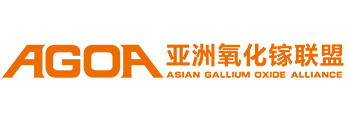

【Device Papers】High-Responsivity Self-Powered Photoelectrochemical Solar-Blind Ultraviolet Detector Based on (104)-Oriented Ga₂O₃ Nanorods
日期:2025-11-05阅读:80
Researchers from the South China University of Technology have published a dissertation titled "High-Responsivity Self-Powered Photoelectrochemical Solar-Blind Ultraviolet Detector Based on (104)-Oriented Ga2O3 Nanorods" in Surfaces and Interfaces.
Abstract
As an ultrawide-bandgap semiconductor, Ga2O3 is highly promising for solar-blind ultraviolet detection. Traditional preparation methods are often complicated and costly. In this study, α-Ga2O3 nanorods were synthesized via a hydrothermal method and employed to construct a photoelectrochemical ultraviolet PD (PEC UV PD). We investigated the influence of hydrothermal parameters on the Ga2O3 thin films. It was observed that extending the hydrothermal reaction time led to an increase in film thickness, whereas elevating the precursor concentration resulted in a reduction in nanorod dimensions. Notably, the introduction of ammonia induced preferential orientation of the nanorods. On the basis of these findings, a Ga2O3-based PEC PD with a preferential (104) crystal-plane orientation was successfully fabricated, demonstrating excellent solar-blind detection performance. Under 267 nm deep ultraviolet light, it achieved a maximum responsivity (R) of 27.8 mA W⁻¹ and detectivity (D*) of 2.80 × 1010 Jones, with a solar-blind to near-ultraviolet rejection ratio (R267nm/R365nm) of 11,949. The rise time (τrise) was 36.2 ms, and the delay time (τdelay) was 20.1 ms. By combining experiments with density functional theory (DFT) calculations, the study indicates the (104) surface facilitates H₂O adsorption, enhancing the oxidation reaction at the PEC PD photoanode-electrolyte interface. This work offers a new approach for developing cost-effective, high-performance solar-blind ultraviolet detectors.
DOI:
https://doi.org/10.1016/j.surfin.2025.107844


